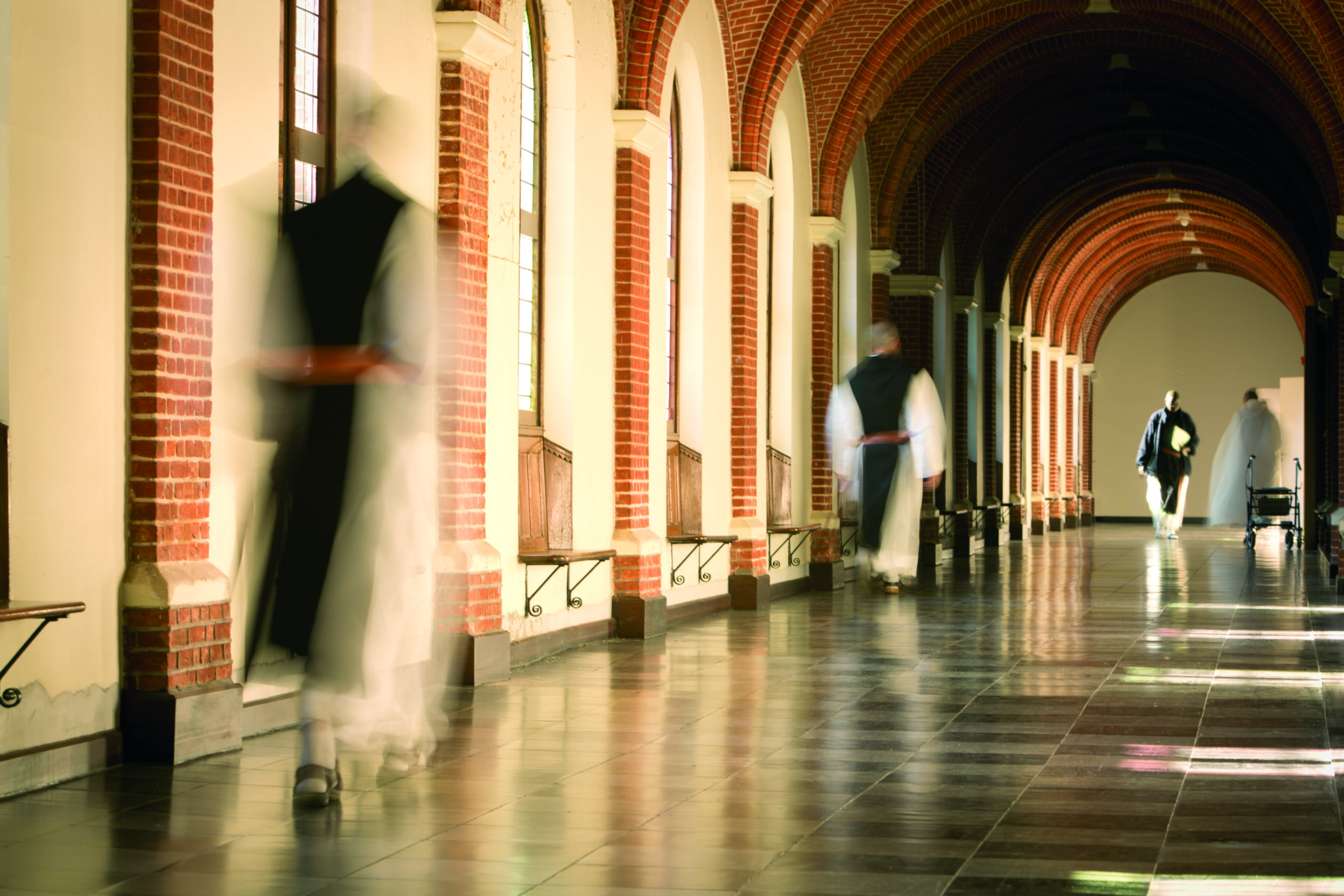
The work of monks in the 21st century
The monks at Westmalle live by the Rule of St Benedict. They must work because the Rule stipulates that the abbey must support itself financially. Additionally, prayer alone is not enough to bring you closer to God. Meaningful labour is equally important for spiritual growth. What does monastic work look like today? Let’s take a look inside the abbey.
Today, most western abbey communities try to make a living for themselves. Christian monastic traditions are various and have evolved; there used to be many mendicant monks who lived off charitable giving – just as is still the case today in Buddhism. We take inspiration from an ancient text that tells the story of a newcomer to an abbey who had no desire to work. He felt exalted and wanted only to engage in spiritual matters. When he finally felt hungry and came asking for food, the abbot told him that he should have worked for it. In our order, no one is above daily labour.
From cultivating land to brewing beer
Hard work runs like a golden thread through the history of Westmalle Abbey. It has even had an impact on the landscape: after the foundation of the abbey in 1794, the monks turned poor heath and marshland into fertile land for cultivation. Anyone looking at the green surroundings around the abbey today should be well aware that it is the result of decades of work.
Today, the greatest activity within the abbey walls undoubtedly takes place in the brewery. This not only provides work for the monks, but also for countless people from the local area: creating jobs can also be meaningful work in itself. At the same time, the brewery demonstrates the importance the community attaches to achieving the right balance between work and other things in life. For the past 30 years, exactly the same amount of beer has been produced each year – even when demand has exceeded output. Even labour must know its place.
Working every day
In addition to the brewery, Westmalle Abbey also houses a farm, a cheese factory and a bakery. You might be tempted to think that ‘work’ at the abbey always equals ‘manual labour’. While that kind of work is certainly seen as an ideal complement to spiritual activities, the monks also engage in other tasks. For example, they do administrative work, or they take care of sick and elderly monks.
The way the work is divided up has also evolved over time. These days, the abbey community has fewer monks than before. So, on average, each monk has a lot more work to do. Work in the brewery, for example, is combined with duties in the library, in the guesthouse, as a priest and more. This division of labour is not always easy to manage. That’s why external staff are also engaged today for certain activities. This includes maintenance of the greenery surrounding the abbey.
Room for creativity
Work at the abbey does not just revolve around maintenance or production. For example, the monks are also allowed to indulge their creativity and develop their personal interests to the full – something Benedict emphasised as being important. The Westmalle abbey walls are buzzing with creativity in many different fields, such as architecture, theatre, drawing, and painting. These are all activities that the monks like to share with each other and which have more than once resulted in works of art or architectural plans.
Labora, today and tomorrow
The Rule of St Benedict is sometimes described as ora et labora, or ‘pray and work’. Although this summary is very concise, it clearly shows the importance of work for all who follow his rule – including the monks at Westmalle. But it is clear that the interpretation of ‘labora’ can be quite broad. From manual labour to caring for the sick, from office work to creative activity: these are all avenues to spiritual growth and the word of God.